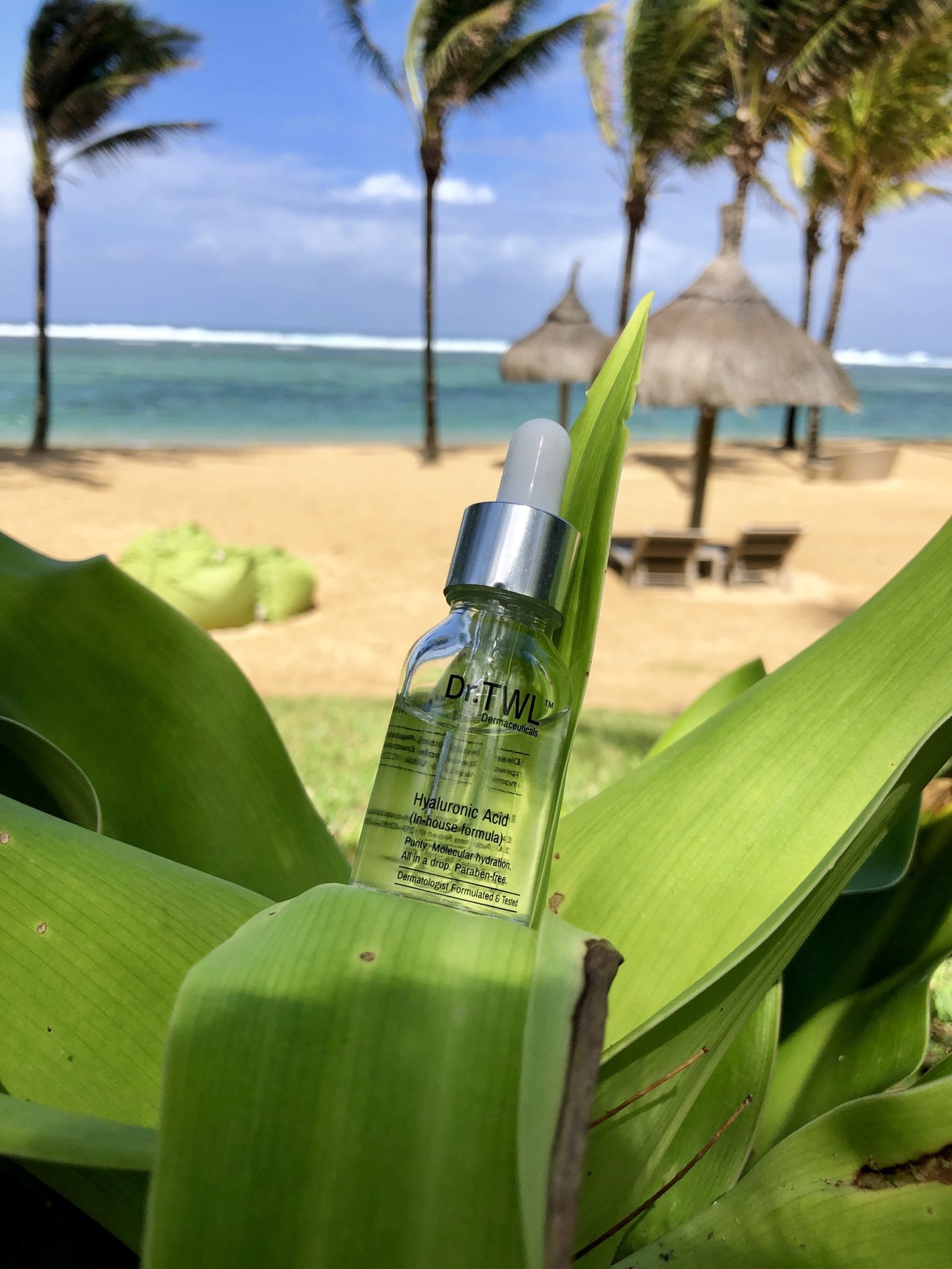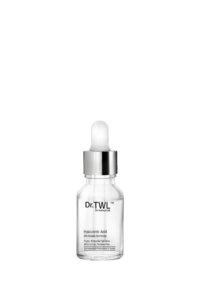Why Hyaluronic Acid is a Dermatologist Favourite for Anti-Ageing
A key molecule in slowing down skin ageing, the skincare industry has presented product after product with hyaluronic acid as the star ingredient. Despite its popularity, not many may be certain about the science behind this molecule. Here, we breakdown the benefits of the Hyaluronic Acid Serum so that you have the sufficient knowledge before your next purchase.
What does hyaluronic acid do?
Also known as hyaluronan, hyaluronic acid is a naturally occurring polysaccharide that is extensively distributed throughout our connective tissues, and is a key element of the dermal extracellular matrix. The extracellular matrix has many functions: facilitates intercellular communication, provides support and segregates tissues from one another. We can find most of our hyaluronic acid in soft connective tissues and our skin. In fact, about 50% of the acid in our bodies is found in our skin.
Hyaluronic acid serum benefits
The benefits of hyaluronic acid serum include hydration, lubrication of joints and supporting the derma extracellular matrix. During tissue injury and scar healing, our bodies produce more hyaluronic acid to activate the appropriate immune response for recovery. In the skin, we will find the hyaluronic acid content to be much higher in the dermis comparing to the epidermis. In short, the acid in the dermis helps to regulate water balance, ion flow and works as a sieve to filter out unwater molecules. As a skincare ingredient, a crucial function is the high water-binding ability of the hydrophilic (water-loving) acid.
Moisture retention
This ingredient is popular as a skincare buzzword due to its various functions in skin. According to Dr Teo Wan Lin, an accredited dermatologist at TWL Specialist Skin and Laser Centre, she says: “One property that we may value the most would be its strong moisture retention ability. We keep our skin hydrated with the large amounts of hyaluronic acid in our skin dermis. With just one gram of the acid, it can approximately hold six litres of water.”
If we already have hyaluronic acid in our bodies, why are skincare products infusing this ingredient into their formulas? As we grow older, the amount of hyaluronic acid in the skin decreases. To replenish our skin’s source of hyaluronic acid, topical application of this acid has emerged as a new step in our skincare routine.
Hyaluronic acid for skin ageing
Hallmarks of youthful skin include resilience and pliability. These characteristics are largely due to the skin’s high content of water. And as you may guess, there is an association between skin ageing and the loss of moisture in the skin. With the key molecule being hyaluronic acid. This makes the ingredient a star favorite in cosmetic dermatology and skincare products.
Hyaluronic acid as filler or skincare ingredient
For years, we may be more familiar with hyaluronic acid as an injectable. An accredited dermatologist injects hyaluronic acid into your skin, allowing facial lines and wrinkles to fill temporarily. This recovers soft-tissue volume of the skin. Many industrial fillers exist, with the main differences being the source of hyaluronic acid, concentration, the use of anesthetic and type of crosslinking.
The conventional use of hyaluronic acid as fillers instead of topical application is due to the size of the molecule. While the hyaluronic acid molecule is 3,000nm in diameter, intercellular space is only 15 to 50nm. In summary, this would mean despite the valuable functions of this ingredient, it is unable to penetrate into the skin’s dermis layers.
However, with the advancement of science, there has been successful reduction of the size of hyaluronic acid molecules without disrupting its essential structure. This allows it to cross our skin barrier, delivering to our dermis layers for improvement in hydration.
How to choose hyaluronic acid skincare?
The hyaluronic acid found in most skincare formulations are synthetic. Thus what really separates an effective serum from the others is in the concentration and the manufacturing process. A laboratory-grade serum is likely to be more effective and reliable, and make sure to check that it is paraben free.
Parabens are preservatives found commonly in beauty, household or industrial products to prevent the growth of bacteria and microbes. Common types of parabens include methylparaben, ethylparaben and propylparaben. These preservatives have found to be mimic the activity of the hormone estrogen. There is an association between increased estrogenic activity with certain forms of breast cancer.
Is this Hyaluronic Acid Serum for sensitive skin, rosacea, or perioral dermatitis?
Yes. This is a pure formula that is freshly compounded with 2 main ingredients, including water as a diluent. This ensures that the product has 0 sensitization. It also has been tested by individuals with severe skin diseases. This is how our Hyaluronic Acid serum is different from other formulas – because of the purity of the formula. Which means optimal absorption and efficacy, as opposed to mono-molecular weighted formulas. Because it is freshly compounded, the shelf life of the serum is 6 months from the time of purchase.
Hyaluronic Acid (In-House Formula)
For a dermatologist-formulated and approved serum, look out for cult favourite Hyaluronic Acid (In-House Formula). An intensely concentrated, laboratory-grade pure serum freshly compounded for total skin hydration, this paraben-free serum will be able to penetrate deep into the skin’s layers to moisturize and offer visible plumping.

Taken by one of our users Ros Leon on a trip to Mauritius Islands. This in house, laboratory-grade pure hyaluronic acid is an intensely concentrated, paraben-free, refillable serum freshly compounded for total skin hydration.
© 2018 drtwlderma.com. All rights reserved.
SHOP THE STORY










Leave a Reply
Want to join the discussion?Feel free to contribute!